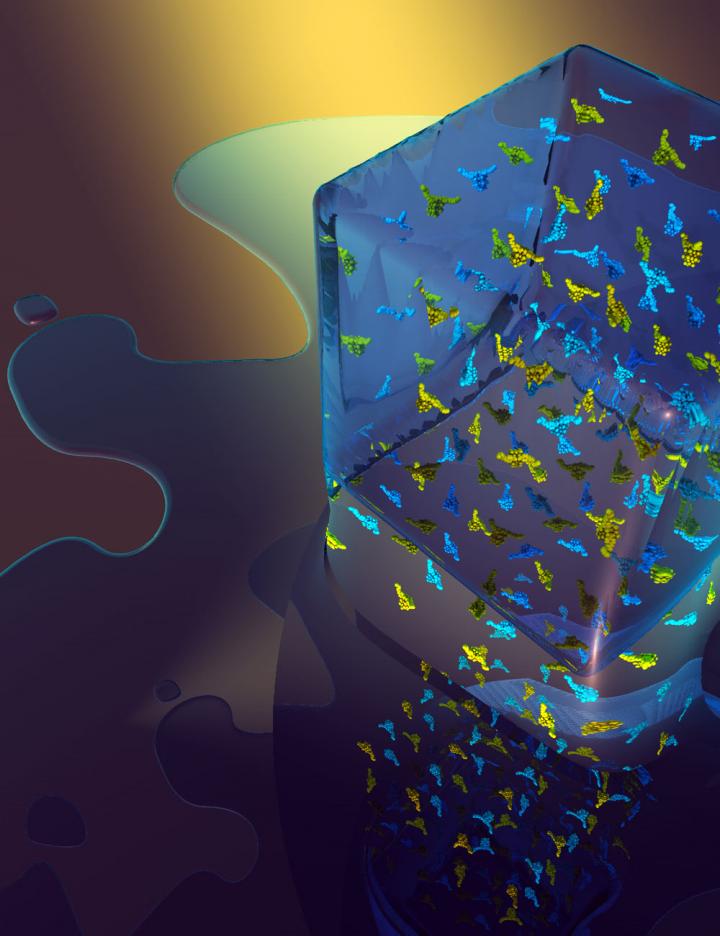Game-changing finding pushes 3D-printing to the molecular limit

Cube of advanced material featuring photochromic molecules. Credit: Victor Sans Sangorrin
“This bottom-up approach to device fabrication will push the boundaries of additive manufacturing like never before. Using a unique integrated design approach, we have demonstrated functional synergy between photochromic molecules and polymers in a fully 3D-printed device.
Our approach expands the toolbox of advanced materials available to engineers developing devices for real-world problems,” explains Dr Sans.
To demonstrate their concept, the team developed a photoactive molecule that changes from colourless to blue when irradiated with light. The colour change can then be reversed by exposure to oxygen from the air.
The researchers then 3D-printed composite materials by combining the photoactive molecules with a tailor-made polymer, yielding a new material that can store information reversibly.
Dr Newton, said: “We can now take any molecules that change properties upon exposure to light and print them into composites with almost any shape or size.
In theory, it would be possible to reversibly encode something quite complex like a QR code or a barcode, and then wipe the material clean, almost like cleaning a whiteboard with an eraser. While our devices currently operate using colour changes, this approach could be used to develop materials for energy storage and electronics.”
###
The research is supported by the Leverhulme Trust, the German Academic Exchange service (DAAD) and the University of Nottingham.
More information is available from Dr. Victor Sans Sangorrin on Victor.SansSangorrin@nottingham.ac.uk or 0115 7484949 or Emma Lowry, Media Relations Manager (Faculty of Engineering), University of Nottingham on emma.lowry@nottingham.ac.uk or 0115 8467156.
Media Contact
All latest news from the category: Materials Sciences
Materials management deals with the research, development, manufacturing and processing of raw and industrial materials. Key aspects here are biological and medical issues, which play an increasingly important role in this field.
innovations-report offers in-depth articles related to the development and application of materials and the structure and properties of new materials.
Newest articles

First-of-its-kind study uses remote sensing to monitor plastic debris in rivers and lakes
Remote sensing creates a cost-effective solution to monitoring plastic pollution. A first-of-its-kind study from researchers at the University of Minnesota Twin Cities shows how remote sensing can help monitor and…

Laser-based artificial neuron mimics nerve cell functions at lightning speed
With a processing speed a billion times faster than nature, chip-based laser neuron could help advance AI tasks such as pattern recognition and sequence prediction. Researchers have developed a laser-based…

Optimising the processing of plastic waste
Just one look in the yellow bin reveals a colourful jumble of different types of plastic. However, the purer and more uniform plastic waste is, the easier it is to…



